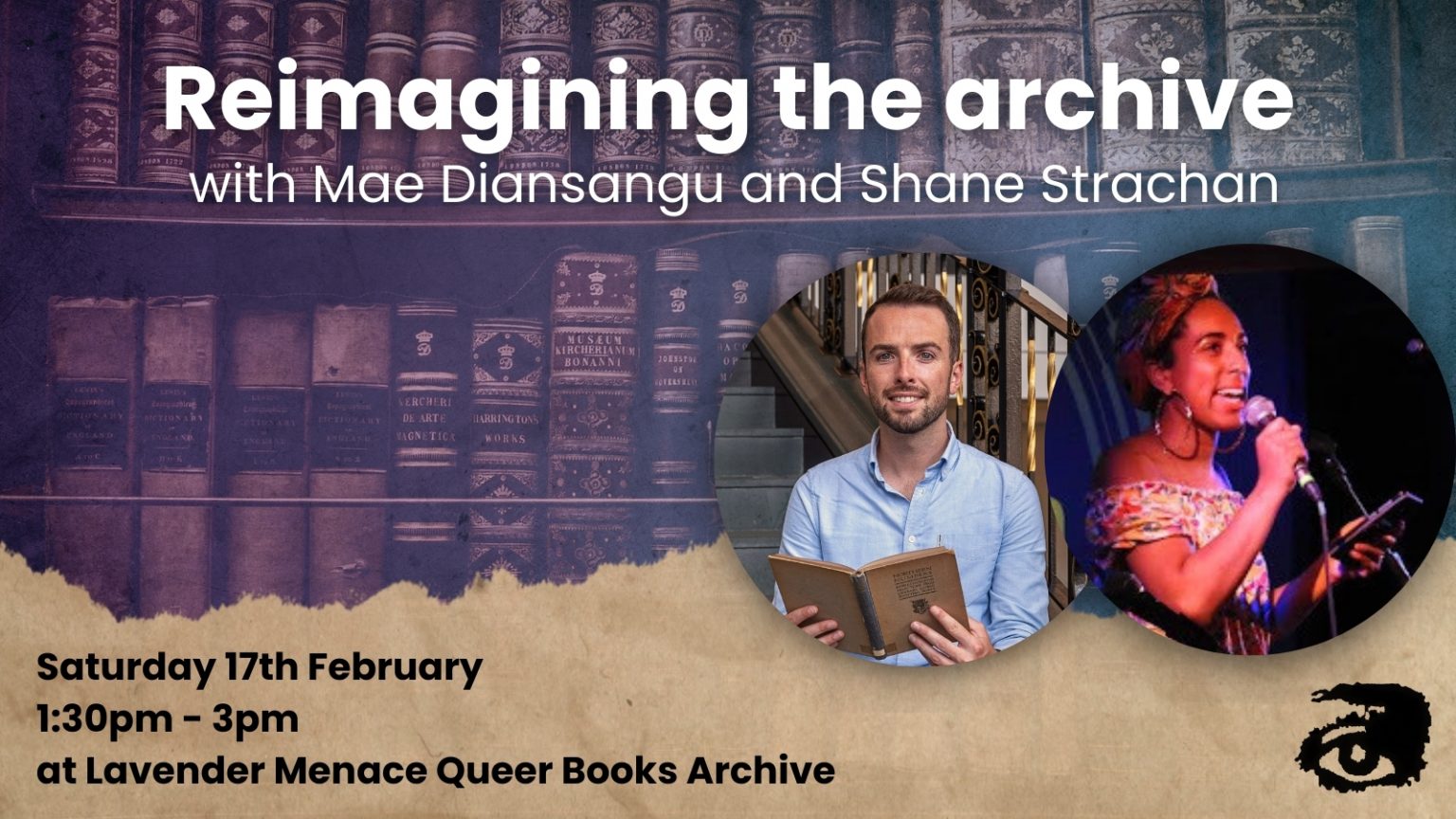Category: Archive
-

Reimagining the Archive with Mae Diansangu and Shane Strachan
You can now watch the recording of this event online Last year, we welcomed Mae Diansangu and Shane Strachan to the Lavender Menace Queer Books Archive for an afternoon of […]
-

Archiving Queer Futures: Eman Abdelhadi in conversation with Nat Raha
You can now watch the recording of this event online. Lavender Menace hosted an online discussion between two activist scholars on imagining and archiving queer futures. Dr Eman Abdelhadi is […]
-
We want your books
Lavender Menace’s queer books archive is growing. We are cataloguing several recent donations, including one from LGBT Health and Wellbeing, and making some exciting finds. We’re always looking for out […]
-
Rebecca by Daphine du Maurier
Rebecca by Daphne du Maurier.Gollancz, 1938; Virago (present publisher). Last night I dreamt I went to Manderley again… Rebecca, Daphne du Maurier’s best known novel, has never been out of […]
-
Hot-Blooded Dinosaurs
The Hot-Blooded Dinosaurs: A Revolution in Palaeontology by Adrian DesmondBlond & Briggs, 1975. QUEER DINOSAUR DISCOVERED! Some people may remember the ITV series based on this illustrated science book, now […]
